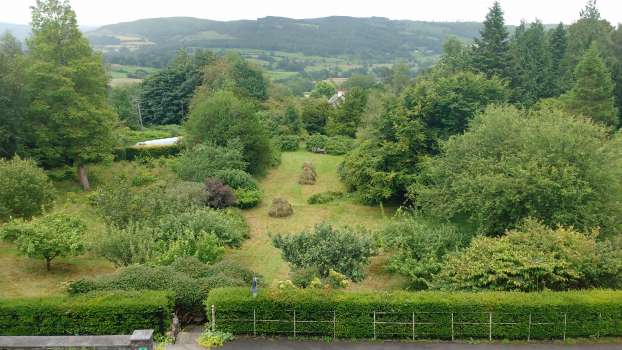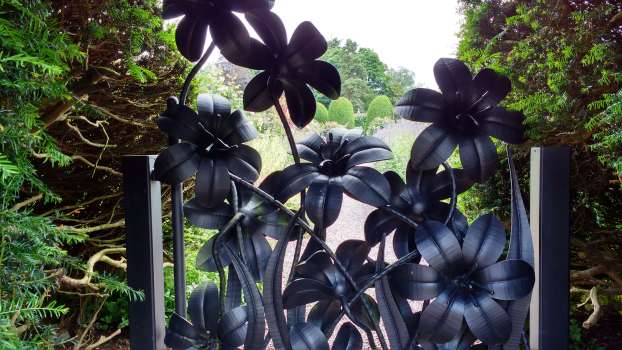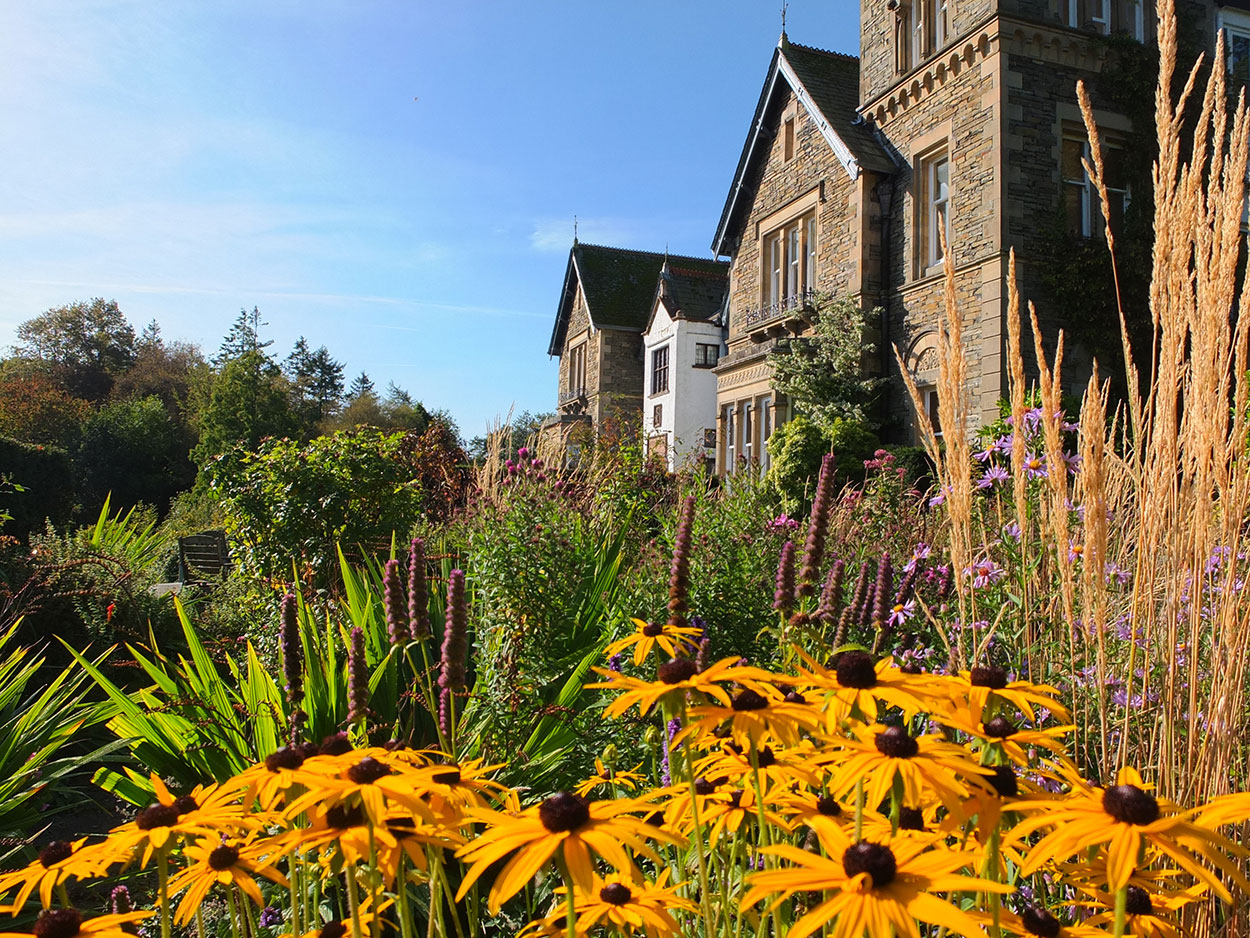We are in the middle of a rather typical Lake District summer - showers, a few hours of sun then more showers. The Lake District doesn’t get its reputation without good reason. The light, however, is special. Rainbows against a black sky with shafts of light on yonder fell. No wonder it was the land of the Poets.
What it means for the garden and land here at Yewfield is, unfortunately, ongoing slug damage on our vegetables, difficulties in getting the hay in and to top it off we have deer eating the flower buds off of phlox and day lilies on the patio. Like thieves in the night they are coming in and devouring our precious summer blooms. We expect them to come into the garden in winter when there is little to eat in the forest but in midsummer? We’ve had enough and are fencing them out. It would be lovely to be able to afford artisan-designed gates such as the ones we saw at Hutton in the Forest but time is of the essence so off we went to Relph’s near Penrith and picked up a couple of six-bar wooden gates. We’ll stain them slate grey and plug gaps with woven hazel and willow. Simple, vernacular, practical and affordable. It more accurately describes the way we garden here, lovely as it would be to have elegant and expensive metal gates.


We have had five visits recently from a variety of local groups interested in the way we manage our meadows, forest and gardens. We like to look at land as an integrated whole fostering ‘virtuous circles’ that such relationships create. For example hay from our meadows feeds our ponies that give us horse muck going into the compost which feeds our vegetables; flowering meadows and gardens feed our bees which pollinate our vegetables and flowers and give us honey; trees slow down water runoff downstream, absorb carbon and give us firewood and wood chip for our boiler.

An American friend, who has recently purchased some forest land in Hawaii, was asking us about our ‘land ethic’ so here are some of the guiding questions we suggested:
What does nature do best here? If you have old growth forest you would want to preserve it intact where possible as the ecological relationships there are old and complex and will require time to understand.
What flora and fauna are resident? Learn to identify the resident plants and animals on your patch. You should have a baseline to see how your management affects those species over time. Also you may have locally or nationally rare species inhabiting places where you want to build or cultivate.
How resilient is the forest? Are there invasive species, pests and/or diseases that you need to be aware of and then how will you decide to intervene? It may be necessary, as we are having to do here at Yewfield, to introduce a variety of site-specific species so the forest as an ecosystem can survive in the long term if faced with the demise of a dominant species. With climate change and international trade we don’t know what is around the corner for our forests.
How can you make the forest financially sustainable? Managing land for conservation can be very satisfying but costly so if there are ways for the land to pay its way all the better. For example, are there conservation grants in Hawaii for preserving native forest? Can you tap into carbon credit schemes? Can you find volunteer help such as WWOOF (World Wide Opportunities on Organic Farms) or local conservation organisations?
Where are the best soils? These are the best areas to exploit for crop production. Poor soils tend to foster more plant diversity.
Managing land in as holistic way as possible is challenging - weather, slugs and deer notwithstanding. It is also life affirming.
Go back to all blog posts or read the next entry in our blog here →
You can also read the previous blog post here.
